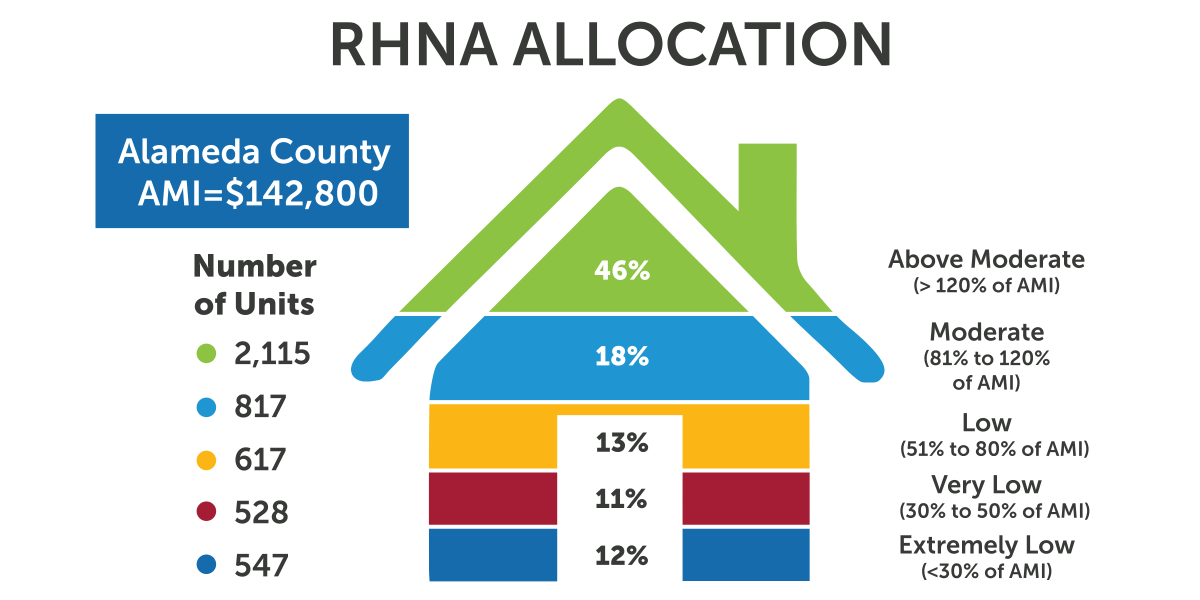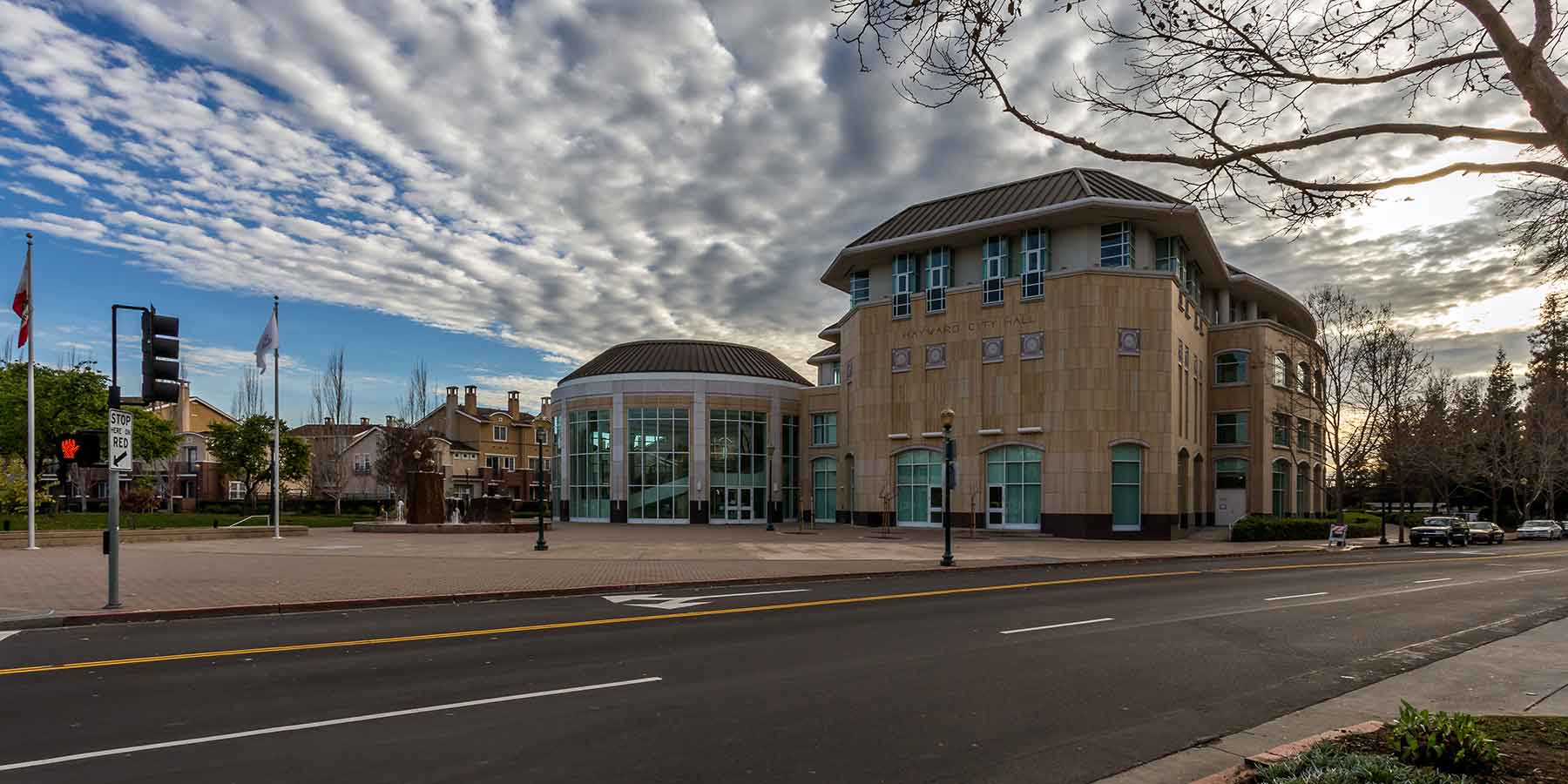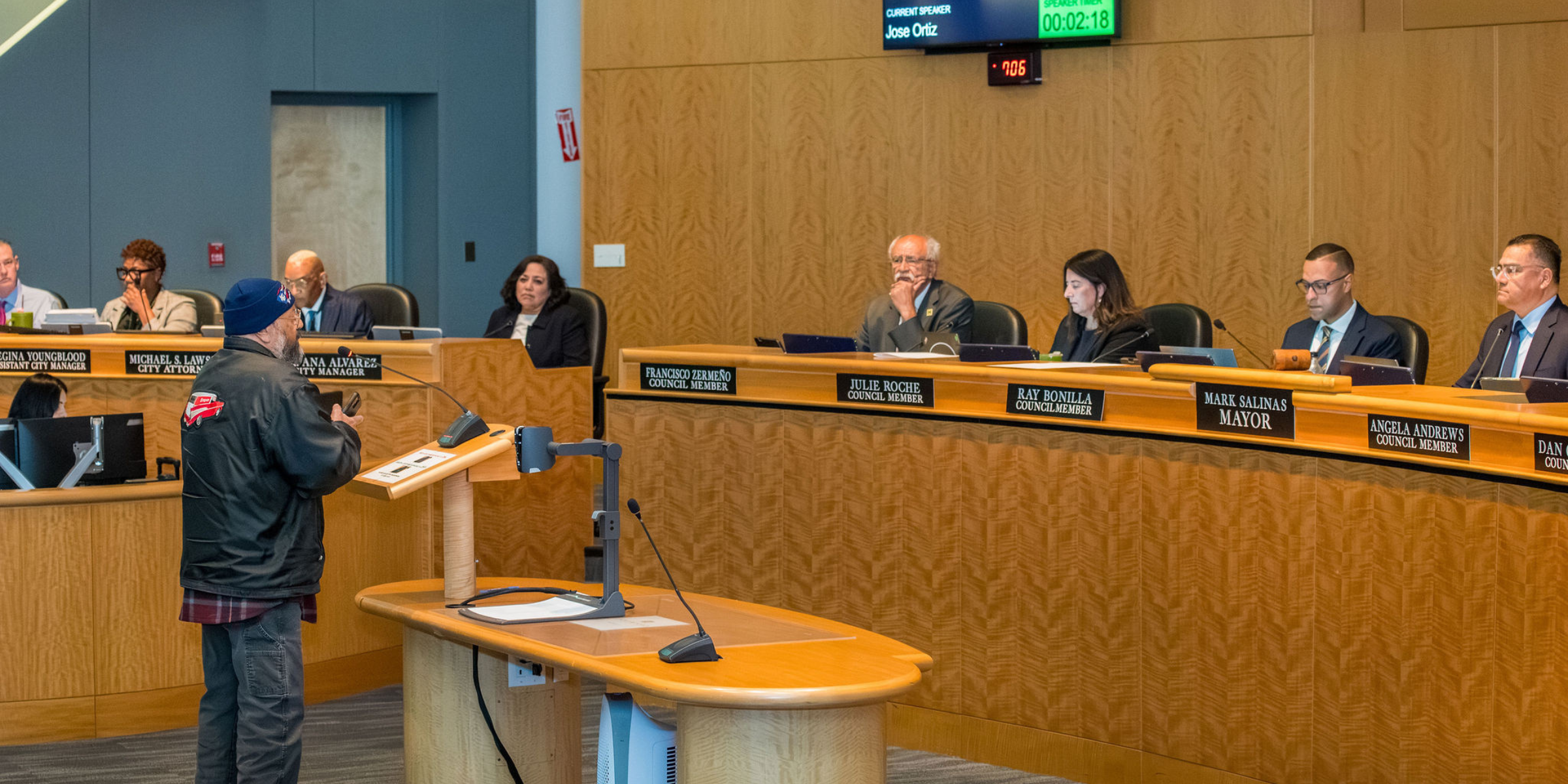Projected Housing Needs
3.1 Introduction
State Housing Element Law (Govt Code 65580 et. seq.) requires regional Metropolitan Planning Organizations (MPOs) to identify each member jurisdictions’ “fair share allocation” of the RHNA provided by HCD. Each city and county must demonstrate their capacity to accommodate their local share of regional housing needs in the community’s housing element. Each jurisdiction holds the responsibility for meeting their RHNA numbers.
The Association of Bay Area Governments (ABAG), the MPO for Hayward, adopted its 6th cycle RHNA Allocation Methodology in December 2021. Each local government must demonstrate how it will accommodate the RHNA in the Housing Element by 2023. ABAG considered several factors for determining the allocation, which weighed both projected and existing housing need. Projected need of housing was informed by household growth, future vacancy need, and replacement need, while existing need considered transit accessibility, jobs accessibility, and residual need in disadvantaged communities weighing factors such as overcrowding. The distribution of the RHNA across all four income categories factored in a social equity adjustment, which allocated a lower portion of lower-income RHNA jurisdictions that already had high concentrations of such households in comparison the County, and inversely, allocated a greater proportion of said households to jurisdictions lacking an existing concentration of lower-income households. The social equity adjustment also includes the goal to Affirmatively Further Fair Housing (AFFH), which adjusted the distribution of RHNA in jurisdictions either very low or very high resource areas.
Projected housing needs are broken down by income level categories based on definitions in the California Health and Safety Code (Section 50079.5). HCD calculates these limits as “extremely low,” “very low,” “low,” “median,” “moderate,” and “above moderate” and publishes these at the county level. Hayward’s 2023 income limits are shown in graphic below.
Hayward’s share of regional future housing needs is 4,624 total units for the January 2023 through January 2031 planning period. In the prior planning period, Hayward was allocated 3,920 housing units during the 2015-2023 5th Cycle Housing Element. The current 6th Cycle RHNA for the planning period of 2023-2031 represents an increase of approximately 18 percent over the previous RHNA cycle.
While the City is not responsible for the actual construction of these units, the City is responsible for ensuring that there is adequate land zoned to accommodate the housing allocation and for creating the regulatory framework in which the private market could build the number of units and unit types included in the RHNA allocation. This includes the creation, adoption, and implementation of policies, zoning standards, municipal code changes, and/or economic incentives to encourage the construction and feasibility of various types of units.









